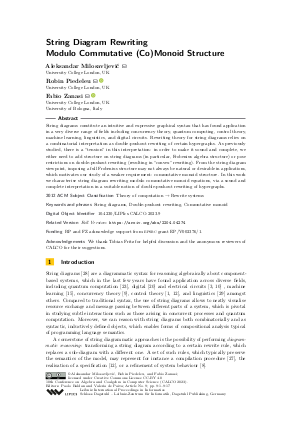@InProceedings{milosavljevic_et_al:LIPIcs.CALCO.2023.9,
author = {Milosavljevi\'{c}, Aleksandar and Piedeleu, Robin and Zanasi, Fabio},
title = {{String Diagram Rewriting Modulo Commutative (Co)Monoid Structure}},
booktitle = {10th Conference on Algebra and Coalgebra in Computer Science (CALCO 2023)},
pages = {9:1--9:17},
series = {Leibniz International Proceedings in Informatics (LIPIcs)},
ISBN = {978-3-95977-287-7},
ISSN = {1868-8969},
year = {2023},
volume = {270},
editor = {Baldan, Paolo and de Paiva, Valeria},
publisher = {Schloss Dagstuhl -- Leibniz-Zentrum f{\"u}r Informatik},
address = {Dagstuhl, Germany},
URL = {https://drops.dagstuhl.de/entities/document/10.4230/LIPIcs.CALCO.2023.9},
URN = {urn:nbn:de:0030-drops-188067},
doi = {10.4230/LIPIcs.CALCO.2023.9},
annote = {Keywords: String diagrams, Double-pushout rewriting, Commutative monoid}
}

 Creative Commons Attribution 4.0 International license
Creative Commons Attribution 4.0 International license


















